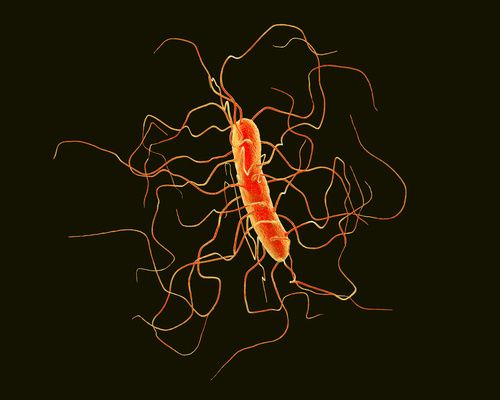Bacteriocin Nisin Active Against C. Diff in Fecal Fermentation Model
Purified nisin is effective at killing Clostridioides difficile, a recent ex vivo study demonstrated, opening up the potential to use the bacteriocin as a treatment.

Purified nisin, a bacteriocin, showed promise for selectively targeting Clostridioides difficile with minimal impact on the microbiota composition, a new study found.
The study, published in the Journal of Applied Microbiology, used an ex vivo fecal fermentation model of the human colon.
Fecal samples were donated by 6 healthy adults ages 23 to 65 who had no antibiotic use in the prior 6 months. The slurries were spiked with C. difficile (106 CFU per ml) and nisin was added to each fermentation at concentrations ranging from 0 to 500 μM. Gene sequencing was performed after 24 hours to assess the presence of viable C. difficile and microbiota diversity.
“After 24 h fermentation, no viable C. difficile were detected at concentrations of 50 μM nisin or above across all subjects,” the study authors noted.
“In our study, nisin caused a decrease in the relative abundance of Lachnospiraceae, Ruminococcaceae and Bifidobacteriaceae while the Bacteroidetes and Enterobacteriaceae increased, which is consistent with previous findings,” the authors wrote.
Lactobacillaceae, which was identified in samples from 5 of the donors, decreased. More research is needed to determine whether changes to the gut microbiota are temporary or long lasting.
“Bacteriocins have attracted much attention in recent years due to their unique mechanism of action and low propensity to generate resistance and hence could be a solution to some of the most challenging issues of multi-drug resistant pathogens caused by overuse of such antibiotics which cause diseases such as MRSA and VRE,” the authors wrote.
Previous studies have demonstrated effectiveness of other bacteriocins, including lacticin 3147, microbisporicin and thuricin CD against C. diff. The results of other studies suggest that nisin may be as effective as antibiotics like metronidazole and vancomycin at treating C. diff.
The study sheds light on the potential of nisin to treat C. diff and concentrations necessary to be effective. Further research is needed to determine appropriate methods of delivery, which could include rectal administration or encapsulating purified nisin to overcome digestion for oral administration.
“This study has shown the effectiveness of purified nisin to kill C. difficile in a model colon system,” the authors wrote. “In addition, an optimum concentration at which there is minimum collateral damage using 16s rRNA gene sequencing has been established in this system and will be useful for future in vivo work with nisin.”
C. difficile infection is a difficult and costly challenge for health officials, particularly with recurrent infections. An estimated 462,100 cases of CDI occurred in the United States in 2017, and the economic cost of CDI was estimated to be $5.4 billion overall.
Growing concerns about antimicrobial resistance have driven efforts toward alternatives to antibiotics for the treatment of CDI.
Ferring Pharmaceuticals recently presented promising data for its investigational therapy RBX2660, the first microbiota-based live biotherapeutic to show efficacy in the first recurrence of CDI.
